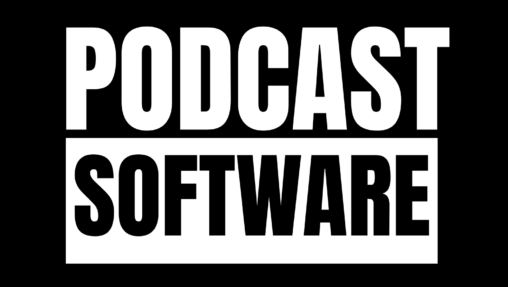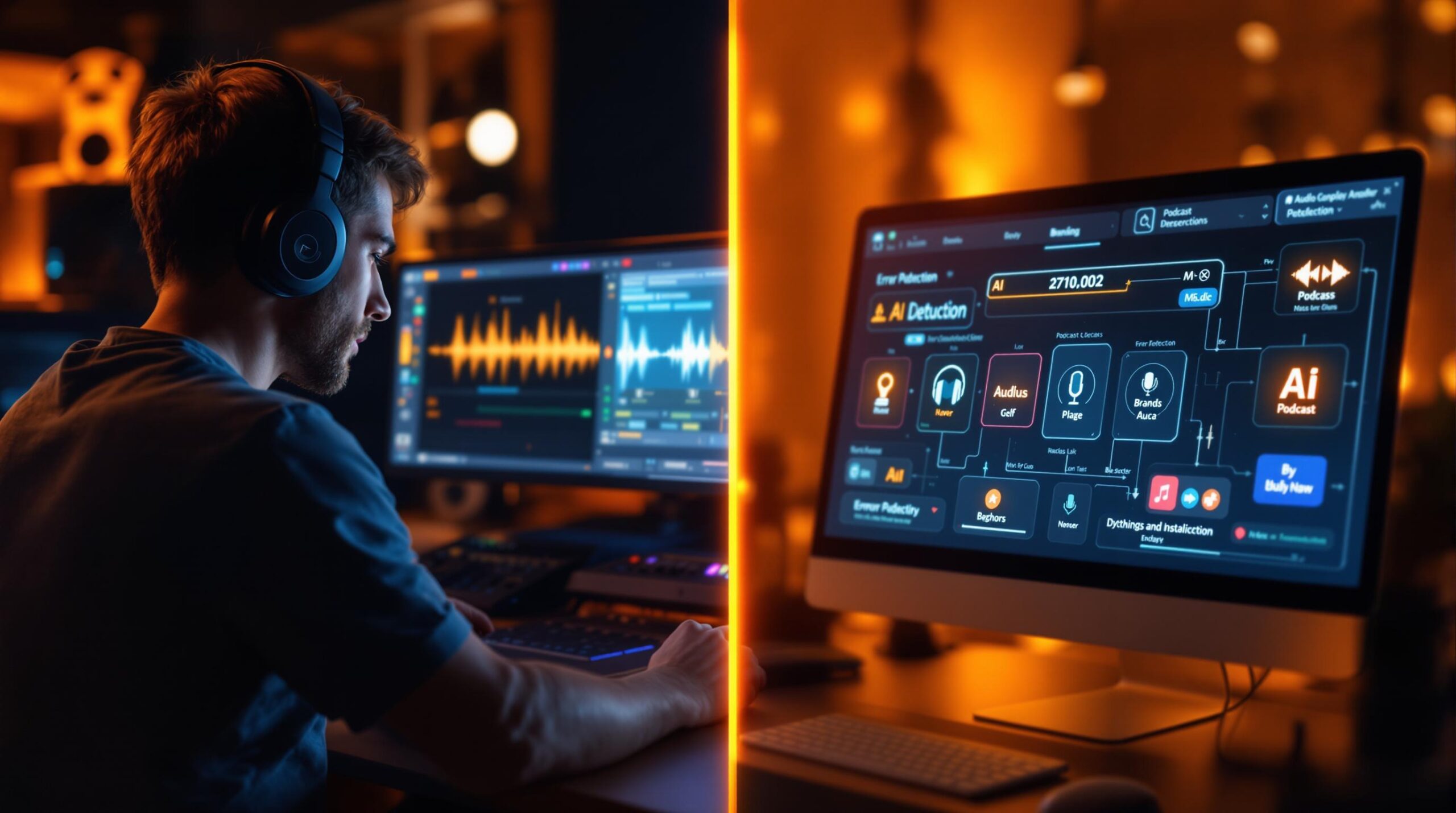AI or manual debugging for podcast errors? The best approach blends both. AI tools save time by quickly spotting technical issues like sample rate mismatches or audio glitches. Manual debugging, on the other hand, excels at catching subtle content problems, like overlapping voices or inconsistent volume.
Key Takeaways:
- AI Debugging: Fast, efficient, and great for repetitive tasks, but may miss nuanced issues.
- Manual Debugging: Time-consuming but provides precision and human judgment for complex problems.
- Best Approach: Use AI for initial edits and manual checks for final polishing.
Quick Comparison:
| Aspect | AI Debugging | Manual Debugging |
|---|---|---|
| Speed | Processes audio in minutes | Requires real-time effort |
| Error Detection | Finds technical issues quickly | Excels at subtle, nuanced errors |
| Cost | Higher upfront software cost | Higher labor cost over time |
| Customization | Limited flexibility | Fully adaptable to needs |
| Best For | High-volume, routine editing | Artistic or complex editing tasks |
Common Podcast Errors
Types of Podcast Audio Errors
Podcast issues generally fall into two categories: technical problems and content-related mistakes. Both can hurt the overall quality of a show. Technical problems might stop episodes from playing properly, while content issues can make the listening experience unpleasant.
Some common technical problems include distorted audio from uneven sound levels and delays caused by using multiple USB microphones, which can create unsynchronized recordings. On the content side, mistakes like filler sounds, long silences, overlapping voices, background noise, and inconsistent volume between speakers or episodes are frequent culprits.
Effect of Errors on Listeners
These errors can frustrate listeners, causing them to disengage, stop listening, leave negative feedback, or question the show’s professionalism. Tools like Dialogue Match can help maintain a polished sound [1], but combining automated tools with manual reviews is often the best way to ensure a high-quality result.
AI tools are great for spotting technical problems quickly, but manual reviews are better at catching subtle content issues. Knowing these common mistakes is a key step toward understanding how AI-powered solutions can address them effectively.
AI-Powered Debugging for Podcasts
How AI Tools Work
AI tools use machine learning to analyze audio files, pinpointing issues like metadata errors or audio glitches that might be missed during manual checks. For example, tools like Resound rely on pre-trained models to detect everything from simple hiccups to more complex technical challenges.
Once the software identifies a problem, it can either fix it automatically or flag the issue for review. This approach speeds up the debugging process while ensuring a consistent level of audio quality.
Why Use AI Debugging?
AI debugging saves time by automating quality control, allowing podcasters to focus on creating content. These tools apply the same standards to every audio file, ensuring episodes maintain a consistent level of quality.
"Debugging gets even messier when you factor in the possible asynchronous communication between microservices, or terminated serverless functions that might have played a part in this error." [3]
In podcasting, similar challenges arise with asynchronous audio tracks or format mismatches. AI tools excel at addressing these technical issues, which are often difficult to catch manually.
Limitations of AI Debugging
While AI debugging tools are powerful, they aren’t perfect. Their reliance on pre-trained models means they can struggle with unique or unexpected problems.
Here are some key challenges:
| Aspect | Impact on Podcast Production |
|---|---|
| Limited Flexibility | May miss unusual issues that require human judgment |
| Customization Challenges | Hard to tailor tools for specific podcast needs |
| Costs | Requires investment in software and training |
| Technical Demands | May need specific hardware or software setups |
These limitations explain why many podcasters still incorporate manual checks. While AI tools bring speed and efficiency, human expertise remains essential for tackling complex or context-specific issues, ensuring a polished final product.
Manual Debugging for Podcast Audio
Steps in Manual Debugging
Manual debugging is a hands-on process to identify and fix audio problems. Here’s how it works:
- Assess the Audio: Use professional audio software and high-quality headphones to spot issues like clipping, distortion, or uneven volume levels.
- Check Technical Parameters: Verify that the bit depth, sample rate, and audio block settings align with industry standards.
- Apply Fixes: Use tools such as limiters to handle clipping or noise reduction filters to clean up background sounds.
Benefits of Manual Debugging
Manual debugging offers a level of precision and customization that automated tools often can’t match. Here’s why it’s valuable:
| Benefit | Explanation |
|---|---|
| Greater Control | Allows for detailed, personalized adjustments |
| Spot Subtle Issues | Detects problems that automation might miss |
| Tailored Fixes | Solutions can be customized for specific needs |
| Skill Development | Improves technical knowledge over time |
Challenges of Manual Debugging
Despite its strengths, manual debugging has some drawbacks, particularly when compared to automated tools:
- Requires significant time and effort.
- Can be difficult for beginners due to the steep learning curve.
- Relies on professional-grade tools and equipment.
- Human fatigue can lead to inconsistencies over long sessions.
While manual debugging takes more time and expertise, it provides a level of human insight that automated solutions might overlook. Many podcasters blend manual and AI-based methods to strike a balance between quality and efficiency.
In the next section, we’ll compare manual and AI debugging to help you decide which approach fits your production workflow best.
sbb-itb-9f49a8d
Comparing AI and Manual Debugging
Comparison Table: AI vs. Manual Debugging
| Aspect | AI Debugging | Manual Debugging |
|---|---|---|
| Processing Speed | Handles hours of audio in minutes | Requires real-time listening and editing |
| Error Detection Rate | Identifies most technical errors but may overlook subtle issues (Descript, 2023) | Depends heavily on human expertise |
| Time Efficiency | Cuts editing time by 75% (Adobe, 2022) | Time-intensive, often needs multiple passes |
| Initial Cost | Higher upfront software costs | Lower initial cost but higher labor expenses |
| Learning Curve | Simpler for beginners compared to manual skills | Demands technical audio expertise |
| Customization | Ideal for routine, standardized edits | Fully adaptable to specific needs |
| Context Understanding | May miss subtle audio nuances | Excels at spotting nuanced audio issues |
| Best For | Quick turnarounds or high-volume editing | Complex audio problems or artistic editing |
This breakdown can help podcasters choose the right approach for their specific needs.
Choosing the Best Method
Budget and Technical Needs
If you’re working within a tight budget, AI tools like Descript offer a good balance of cost and efficiency, though they require an upfront investment. Beginners can rely on AI for basic fixes, while experienced editors can mix AI and manual techniques for added flexibility.
Production Volume
For podcasts with frequent releases or tight deadlines, AI tools are a game-changer. They save significant time, making them ideal for high-volume production.
Quality Expectations
For the best results, use AI for initial edits and manual debugging for the final touch, especially for critical sections of your podcast.
A combination of both methods often works best. AI handles repetitive tasks efficiently, while human oversight ensures top-notch quality. This hybrid approach boosts productivity without sacrificing the final product’s sound.
Adobe Podcast AI Sounds Bad
Resources for Podcasters
To troubleshoot podcasting issues effectively, you need the right tools and resources – whether you’re relying on AI, manual methods, or a mix of both. A great starting point is Podcastsoftware.co, which offers recommendations on editing tools, hosting platforms, and podcast player reviews designed specifically for podcasters.
Here are some key resources to explore:
- Editing Tools: Options for both AI-assisted and manual editing processes.
- Hosting Platforms: Services with diverse storage options and detailed analytics.
- Podcast Players: Reviews of over 30 players, including popular ones like Player.fm and Castbox.
In addition to these, some specialized resources can further improve your debugging workflow:
- Technical Guides: iZotope offers detailed guides to fix issues like vocal mismatches and distortion, providing practical advice for manual troubleshooting [1].
- Audio Quality Tools: Wer8.stream focuses on solving common audio problems and highlights the importance of using the right equipment to avoid these issues [2].
- Hybrid Solutions: Platforms that combine AI and manual methods provide flexibility and help maintain top-notch audio quality while streamlining your workflow.
Using these tools and resources can help podcasters refine their debugging process and ensure a smoother production experience. Whether you prefer AI, manual approaches, or a mix of both, there’s a solution to fit your needs.
Conclusion
AI tools make spotting errors faster, but human expertise is key for handling complex, subtle issues. Research indicates an impressive 80% drop in error rates when combining AI with traditional methods, highlighting the benefits of using both.
By blending AI’s speed with the accuracy of manual work, podcast production becomes more efficient and precise. AI quickly flags technical problems, while manual checks ensure the finer details meet quality standards. Together, they form a strong process that balances speed and attention to detail.
Platforms like Podcastsoftware.co provide editing tools that cater to both AI-driven and manual approaches, giving creators the flexibility to choose what works best for their needs. The ultimate goal is producing crisp, high-quality audio that elevates the listener’s experience.

